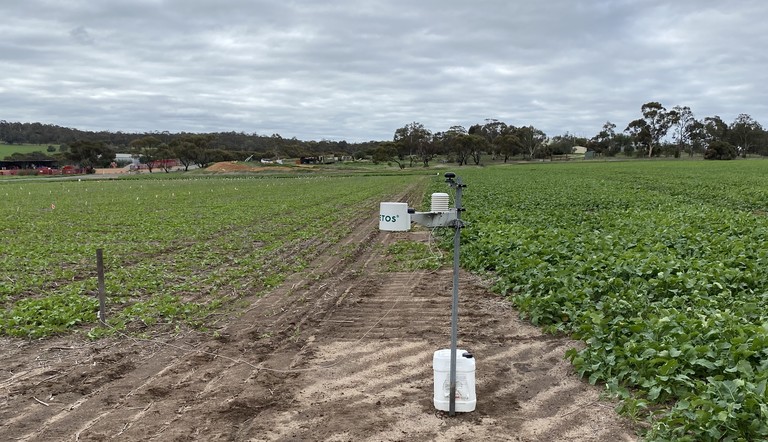
ADAMA enters final trial stages with new disease prediction tool

Providing ADAMA unlimited access to its vast portfolio of disease models for dozens of key crops around the world.
Pessl, a leader in the development and distribution of hardware and software for smart agriculture applications, develops disease model algorithms based on environmental parameters collected from growers’ cloud-connected weather stations linked to the biology and life cycle of the disease to predict the onset and progression of diseases in crops.
Locally, ADAMA Australia started investigating the Pessl disease model back in 2018, working alongside key researchers and customers to validate the model and check it aligns with what they’re seeing in the field, whilst mapping it to Australian conditions.
With a growing fleet of 34 disease trial sites across Australia, the ADAMA team has been monitoring disease in wheat, barley, pulses and canola for the past three years.
Andrew Newall, ADAMA Australia’s AgTech & Innovation Manager says the main focus of the disease mapping work to date has been centred around Septoria Tritici, one of the biggest wheat diseases growers tackle globally.
“Results from our ADAMA Disease Prediction Tool trials so far have been really encouraging, both in accuracy of the results and also the ability to thoroughly validate them,” says Mr Newall.
“We’ve been validating the Septoria Tritici model over the past three years. Although conditions during this period have been relatively dry in many parts, the model has shown to be very effective at predicting infection, and we’ll continue the validation process throughout 2020.
“We’re also now starting to look at Botrytis Grey Mould and Ascochyta Blight in pulses to expand our disease trial.”
The ADAMA Disease Prediction Tool operates using Pessl Weather Stations which are set up in paddocks across the country to gather environmental parameters needed to develop disease models.
ADAMA can use the Pessl disease models to deliver pinpointed advice to growers, allowing them to treat plant diseases earlier in their development and identify the most effective product for each point in the disease cycle. In this way, Pessl increases the efficacy of ADAMA products, increases crop yields, and improves resistance management.
Once launched, the ADAMA Disease Prediction Tool will allow agronomists and growers to receive alerts and access information via desktop and mobile devices, providing users with a greater understanding of the disease risk in their local area.
Gottfried Pessl, CEO and founder of Pessl Instruments says: “I’m confident that connecting our technologically advanced solutions with ADAMA’s deep understanding of growers’ needs and impressive portfolio of crop protection solutions, will bring crop protection to a completely new level in reducing the risk of crop failures from which farmers all over the globe will benefit the most.”
The ADAMA team in Western Australia has seen promising results with the effectiveness of the disease model at a recent faba bean fungicide evaluation site in Kojonup, a site which is also evaluating a range of chocolate spot products including upcoming ADAMA fungicides, Maxentis® and Proviso® set to launch in 2021.
“On this site we have a Pessl Weather Station measuring wind speed, humidity, leaf wetness and temperature, feeding that information into our disease forecasting tool,” says Matt Sherriff,” ADAMA Australia’s Fungicide Portfolio Manager.
“This will allow growers to be more predictive and less reactive when it comes to fungicide applications in the future.”
Meanwhile down in Victoria, Matt Beddison, agronomist with Crop Opti Services in Horsham who has been heavily involved in recent Pessl trials, says: “It’s exciting to be working with ADAMA on developing these disease models. We think they will give us a greater understanding of disease risk and help us with more timely fungicide applications.”
Talking about ADAMA’s AgTech strategy and the value this tool will bring to the market, Mr Newall says: “We’re constantly looking for opportunities to align AgTech developments with our crop protection products to deliver an overall package which adds greater value and user experience for our customers.
“We’re delighted to be in the final validation stages with our latest decision support tool, and I’m confident it will truly support growers and agronomists to make decisive decisions when it comes to crop protection application in the future.”
For further information on ADAMA Australia’s AgTech solutions, visit www.adama.com or contact your local representative.